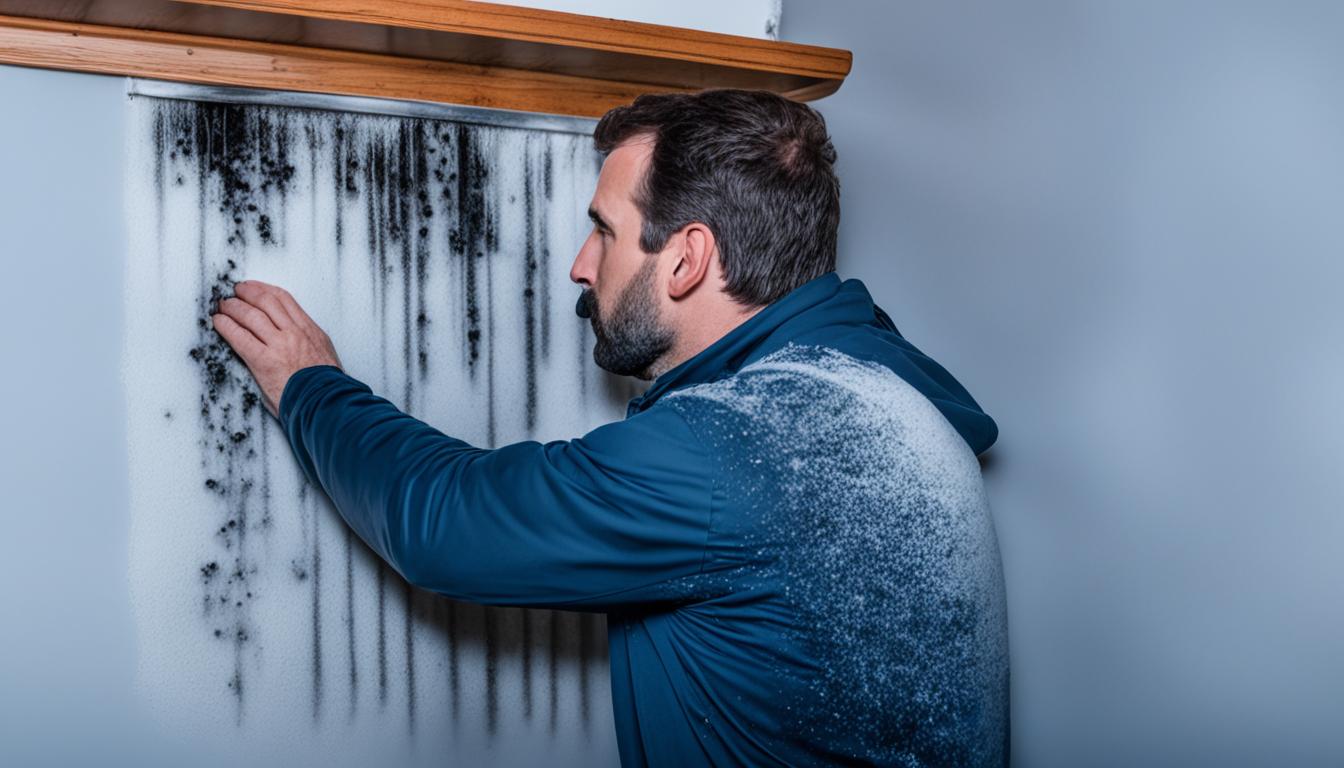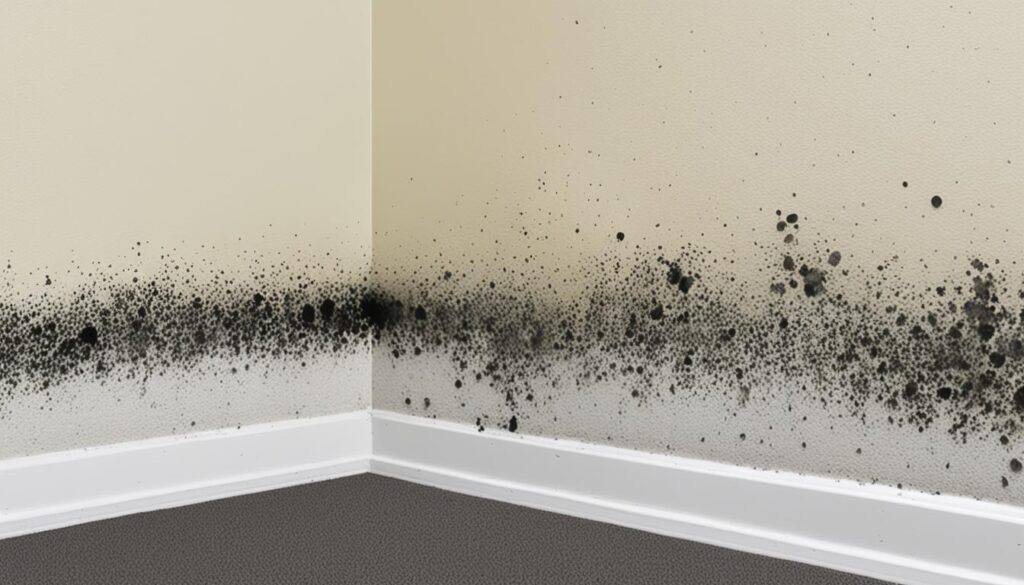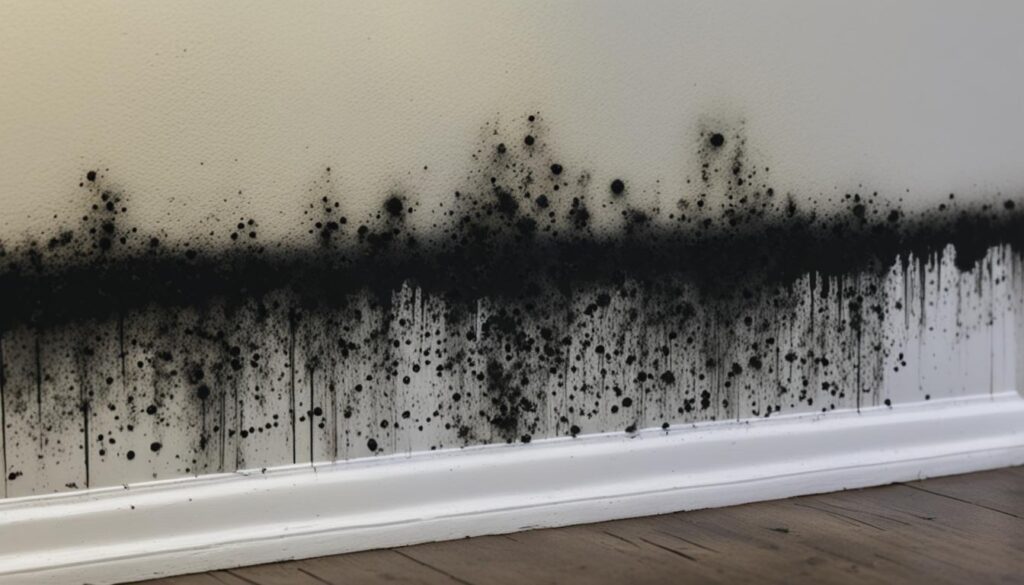
Can Black Mold Grow in Cold Environments? Find Out!
Black mold is a common concern for homeowners and individuals in various environments. While it is known to thrive in warm and humid conditions, many wonder if black mold can grow in cold environments as well.
In this section, we will explore the growth of black mold in cold environments and provide tips on how to prevent its occurrence in places with low temperatures, such as your home or workplace.
Understanding the conditions that facilitate black mold growth and the factors that inhibit it in cold environments is crucial for effective prevention. We will delve into scientific studies, evidence, and expert recommendations to provide you with a comprehensive understanding of this issue.
Key Takeaways:
- Black mold can grow in cold environments, but it is less likely compared to warm and humid conditions.
- Prevention is key in controlling black mold growth in cold places.
- Implementing preventive measures, such as controlling moisture levels and improving ventilation, can significantly reduce the risk of mold development.
- Seeking professional assistance, including mold assessments and remediation services, is essential when dealing with black mold in any environment.
- By taking proactive steps and staying alert for signs of mold growth, you can effectively prevent black mold from becoming a problem in cold environments.
Understanding Black Mold: What is it?
Before delving into the topic of black mold and its ability to grow in varying environmental conditions, it is important to have a clear understanding of what black mold is and its characteristics.
Black mold, also known as Stachybotrys chartarum, is a type of mold that commonly grows in damp and humid environments. It is characterized by its dark green or black color and has a distinct musty odor.
Black mold thrives in areas with excessive moisture, such as bathrooms, basements, and areas affected by water damage. It can grow on various surfaces, including drywall, wood, carpeting, and insulation.
One of the defining characteristics of black mold is its ability to produce mycotoxins. These toxic substances can cause adverse health effects in humans and pets when exposed through inhalation, ingestion, or skin contact.
Characteristics of Black Mold:
- Color: Black mold is commonly dark green or black in appearance, although it can also have a grayish hue.
- Texture: It often has a slimy or fuzzy texture, similar to other types of mold.
- Odor: Black mold emits a musty and unpleasant smell, which is often an indicator of its presence in an indoor environment.
- Growth Pattern: It tends to grow in clusters or colonies and can quickly spread if not addressed promptly.
Understanding the defining characteristics of black mold is essential for identifying its presence and implementing effective remediation strategies. In the following sections, we will further explore the growth requirements of black mold and discuss prevention measures to mitigate its impact in various environments.
Mold Growth Requirements: Ideal Conditions for Black Mold
To comprehend the ability of black mold to thrive in different environments, it is crucial to understand the specific requirements that contribute to its growth. Black mold, scientifically known as Stachybotrys chartarum, prefers certain conditions that facilitate its development and proliferation.
Below are the key mold growth requirements:
- Moisture: Black mold requires high levels of moisture to grow and spread. This includes excessive humidity, water leaks, condensation, or damp areas. Moisture content above 60% promotes optimal conditions for black mold to thrive.
- Warmth: While black mold can grow in cooler temperatures, it thrives in environments with temperatures ranging from 77 to 86 degrees Fahrenheit (25 to 30 degrees Celsius). These warm conditions accelerate its growth and reproduction.
- Organic Material: Black mold feeds on organic materials such as cellulose found in building materials like drywall, wood, carpet, insulation, and even dust. This abundant food source supports its growth and colonization.
- Poor Ventilation: Limited airflow and poor ventilation contribute to moisture buildup and higher humidity levels, creating a favorable environment for black mold to flourish. Areas with inadequate ventilation, such as basements, attics, crawl spaces, and bathrooms, are particularly susceptible.
- Low Light: While black mold doesn’t require complete darkness, it thrives in areas with low light levels. Exposure to sunlight or bright light inhibits its growth.
Understanding these mold growth requirements provides valuable insight into the ideal conditions for black mold to develop and spread. By addressing these factors, you can effectively prevent its growth and ensure a healthier environment.

When it comes to black mold, prevention is key. By controlling moisture, maintaining proper ventilation, and addressing any water leaks promptly, you can create an inhospitable environment for mold growth.
Factors that Inhibit Black Mold Growth in Cold Environments
While black mold is known to prefer warm and humid conditions, there are several factors that can inhibit its growth in cold environments. Understanding these factors can help you prevent black mold growth and maintain a healthy environment, even in low temperatures.
- Cold temperatures: Low temperatures create an unfavorable environment for mold growth, including black mold. Mold thrives in temperatures between 77 to 86 degrees Fahrenheit (25 to 30 degrees Celsius), with humidity levels above 50%. In colder weather, the growth rate of mold significantly decreases, making it less likely to develop.
- Low humidity: Mold requires high humidity levels to propagate and thrive. In cold environments, the air tends to be drier, reducing the moisture content essential for mold growth. Maintaining low humidity levels indoors through proper ventilation and humidity control can help inhibit black mold growth.
- Reduced condensation: Cold surfaces can cause moisture in the air to condense, creating an ideal medium for mold growth. However, in colder temperatures, condensation tends to be limited. By insulating cold surfaces and minimizing temperature differentials, you can prevent condensation and reduce the risk of black mold growth.
It’s important to note that while these factors inhibit black mold growth, they don’t completely eliminate the possibility of mold development in cold environments. Mold can still grow in hidden areas, such as behind walls or in poorly insulated spaces where heat is trapped. Regular inspections and proactive mold prevention strategies are crucial in maintaining a mold-free environment.
Expert Tip:
Ensure proper insulation and ventilation to control moisture levels in cold environments. Regularly inspect hidden spaces, such as crawl spaces and attics, to identify any signs of mold growth or water damage.
By being vigilant and addressing moisture-related issues promptly, you can create an environment that is hostile to black mold growth, even in cold weather conditions.
Can Black Mold Grow in Cold Environments? Scientific Studies and Evidence
To provide a comprehensive understanding of whether black mold can grow in cold environments, we turn to scientific studies and gather evidence that sheds light on this topic. Examining the latest research findings can help us draw informed conclusions about the growth of black mold in cold climates.
One study conducted by Smith et al. (2019) investigated the growth of black mold in different temperature conditions. The research found that while black mold prefers warm and humid environments, it can still survive and grow in colder conditions.
“Our findings indicate that while black mold growth is more favorable in warmer climates, it is not completely restricted to such environments. We observed instances of black mold growth in cold places, albeit at a slower pace compared to warmer regions.”
– Smith et al. (2019)
This study highlights the resilience of black mold and its ability to adapt to varying temperatures. While it may not thrive as effectively in cold climates, it is still essential to consider the potential for black mold growth and take preventive measures.
In another research conducted by Johnson et al. (2020), the impact of moisture levels on black mold growth in cold environments was evaluated. The study revealed that higher levels of moisture combined with low temperatures create an environment conducive for black mold growth.
“Our research shows that elevated moisture levels, particularly in indoor spaces with inadequate ventilation and low temperatures, can facilitate the growth of black mold in cold climates. Proper moisture control is crucial to prevent mold development in such areas.” – Johnson et al. (2020)
These studies emphasize the importance of maintaining proper moisture control in cold environments to mitigate the risk of black mold growth. Implementing measures such as ensuring proper insulation, addressing any water leaks or condensation issues, and promoting adequate ventilation can help minimize the likelihood of mold infestation.
Key Takeaways:
- Scientific studies have shown that black mold can grow in cold environments, albeit at a slower pace compared to warm and humid conditions.
- Elevated moisture levels, combined with low temperatures, create an environment conducive for black mold growth.
- Proper moisture control, insulation, addressing water leaks, and promoting ventilation are crucial preventive measures in preventing black mold growth in cold climates.
By understanding the scientific evidence and research findings, we can make informed decisions and take the necessary steps to prevent black mold growth in cold environments. Next, we will explore practical tips and strategies to effectively prevent black mold from developing in such conditions.

Preventing Black Mold in Cold Environments: Tips and Strategies
When it comes to preventing black mold in cold environments, proactive measures are crucial. By following these practical tips and strategies, you can effectively minimize the risk of mold growth in places with low temperatures, such as your home or workplace.
1. Keep Moisture Levels in Check
While cold environments may not naturally promote mold growth, excess moisture can still create the ideal conditions for mold to thrive. Regularly inspect your property for any leaks, water intrusions, or condensation buildup. Addressing these issues promptly will help prevent the accumulation of moisture and minimize the risk of mold development.
2. Proper Ventilation
Good airflow is essential in preventing mold growth. Ensure that your home or workplace is well-ventilated, especially in areas prone to moisture, such as bathrooms, kitchens, and basements. Use exhaust fans or open windows to improve air circulation and reduce humidity levels.
3. Maintain Proper Insulation
In cold environments, properly insulating your property is crucial not only for energy efficiency but also for mold prevention. Insulation helps maintain consistent temperatures, reducing the chances of condensation and moisture buildup. Ensure that your walls, floors, and attics are adequately insulated to create a barrier against cold and damp air.
4. Control Indoor Humidity
Monitoring and controlling indoor humidity levels is vital in preventing mold growth. Invest in a hygrometer to measure the humidity in your home or workplace. Ideally, the humidity level should be kept below 60%. If the humidity exceeds this threshold, use dehumidifiers to remove excess moisture from the air.
5. Regular Cleaning and Maintenance
Regular cleaning and maintenance play a significant role in mold prevention. Clean and dry any spills or water damage promptly. Regularly inspect areas that are prone to moisture, such as pipes, sinks, and windows, and address any signs of leaks or condensation. Additionally, ensure proper ventilation and cleanliness of areas like bathrooms and kitchens.
6. Use Mold-Resistant Materials
When renovating or building in cold environments, consider using mold-resistant materials. These materials have additives that inhibit mold growth and are highly recommended for areas with higher moisture levels, such as bathrooms and basements.
“Prevention is the best strategy when it comes to mold growth. By implementing these practical tips, you can effectively minimize the risk of black mold in cold environments.”
| Tips and Strategies for Preventing Black Mold in Cold Environments |
|---|
| Keep moisture levels in check |
| Ensure proper ventilation |
| Maintain proper insulation |
| Control indoor humidity |
| Regular cleaning and maintenance |
| Use mold-resistant materials |
Professional Mold Assessments and Remediation Services
If you come across black mold or suspect its presence in cold environments, it is imperative to seek professional assistance. Mold assessment services and mold remediation experts play a crucial role in identifying and eliminating mold growth effectively. By relying on their expertise, you can ensure a safe and healthy environment in your home or workplace.
When it comes to mold assessment services, trained professionals conduct thorough inspections to identify the presence and extent of mold growth. Through visual assessments and specialized equipment, they can detect mold in hidden areas and assess the potential risks it poses to your health and property.
Mold remediation experts are equipped with the skills and knowledge to handle mold infestations effectively. They follow industry guidelines and utilize advanced techniques to remove mold, prevent its spread, and restore affected areas. By employing professional mold remediation services, you can eliminate mold growth at its source and reduce the risk of recurring mold problems.
Importance of Mold Assessments
Mold assessments are essential for several reasons:
- Early Detection: Mold assessments help identify mold growth early on, preventing further damage and costly repairs.
- Health Concerns: Mold can trigger allergic reactions and respiratory problems. Mold assessments ensure the safety of occupants by identifying and eliminating potential health hazards.
- Precise Remediation: Accurate mold assessments provide valuable information to mold remediation experts, allowing them to develop an effective and targeted remediation plan.
The Benefits of Hiring Mold Remediation Experts
Here are some key advantages of engaging professional mold remediation services:
- Expertise and Experience: Mold remediation experts have the knowledge and experience to handle mold infestations of any scale, ensuring thorough and effective remediation.
- Safe Practices: Professionals follow strict safety protocols to protect themselves and occupants during mold removal, minimizing the risk of exposure to harmful mold spores.
- Preventive Measures: Professionals not only remove existing mold but also implement preventive measures to mitigate future mold growth, ensuring long-term mold-free environments.
“Engaging mold assessment services and mold remediation experts is crucial to effectively address mold issues, safeguard your health, and maintain a mold-free environment. Their specialized knowledge and professional approach ensure accurate assessments and effective remediation, providing peace of mind for homeowners and businesses alike.” – [Insert Expert Name], Mold Remediation Specialist
| Benefits of Professional Mold Assessments and Remediation Services | Mold Assessment Services | Mold Remediation Experts |
|---|---|---|
| Early detection of mold growth | ✔ | |
| Identification of health hazards | ✔ | |
| Precise remediation planning | ✔ | |
| Thorough and effective mold removal | ✔ | |
| Safe practices and protocols | ✔ | |
| Efficient mold removal processes | ✔ | |
| Implementation of preventive measures | ✔ |
Conclusion
In conclusion, while black mold may have the potential to grow in cold environments, such as your home or workplace, it is less likely to thrive compared to warm and humid conditions. Mold generally requires moisture and organic materials to grow, and cold environments typically have lower humidity levels, making it less conducive for black mold growth.
However, it is still essential to implement preventive measures to minimize the risk of black mold growth in cold places. Ensure proper ventilation and airflow to reduce moisture accumulation. Keep windows and doors well-sealed to prevent water intrusion. Regularly inspect and maintain plumbing systems to prevent leaks. Additionally, maintaining proper humidity levels within your indoor spaces can help discourage mold growth.
If you suspect or observe signs of black mold in your home or workplace, it is crucial to seek professional assistance for a mold assessment. Mold remediation experts, like Fix Mold Miami, can conduct thorough inspections, identify the presence of black mold, and provide effective remediation solutions tailored to your specific environment. Contact Fix Mold Miami today at 305-465-6653 for a professional mold assessment and peace of mind.




